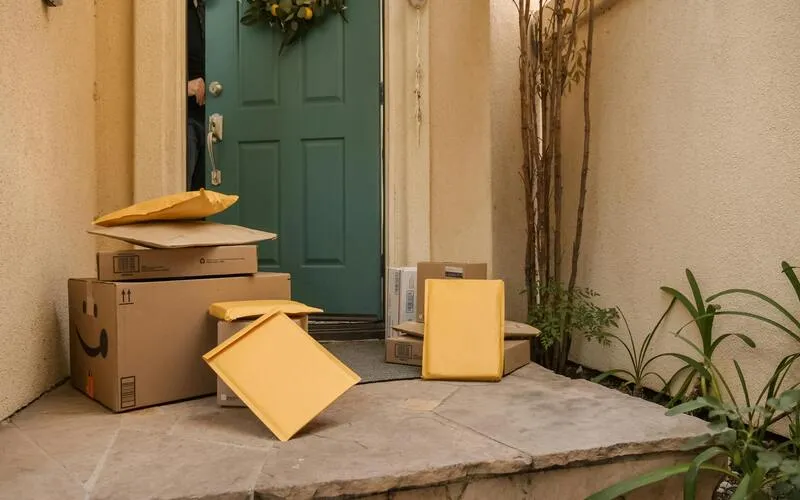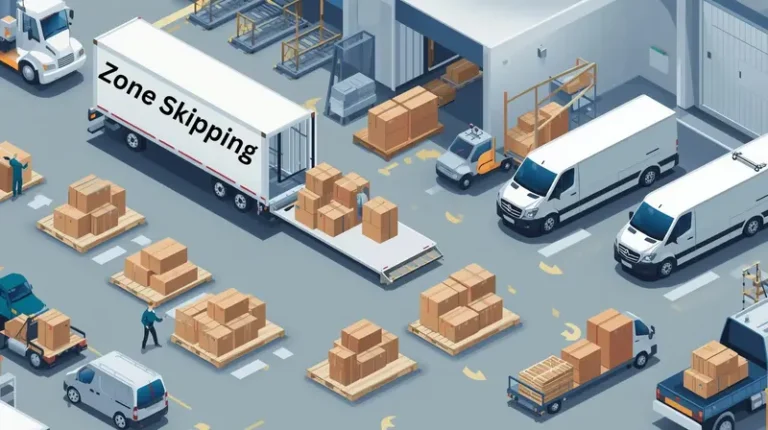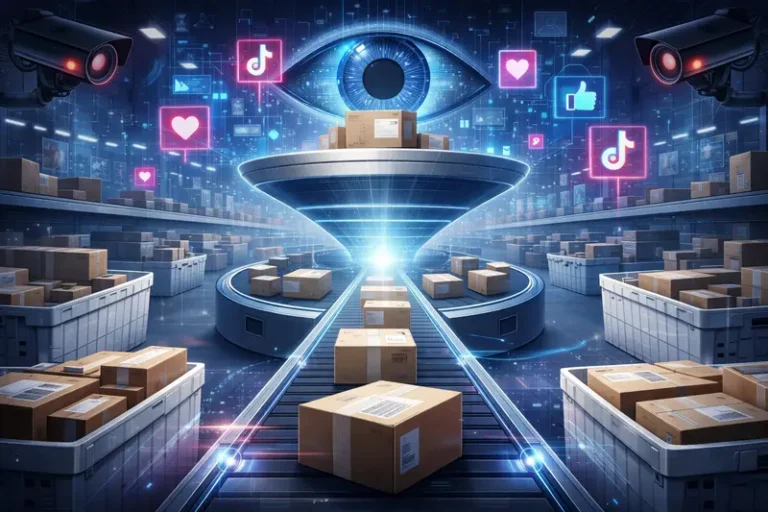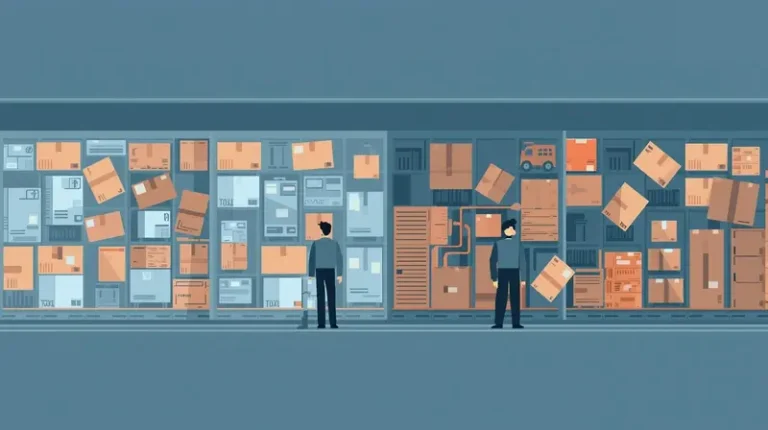Why and How to Use Discreet Packaging for Shipping

Last updated on July 25, 2025

You’d be surprised how many awkward customer support tickets start with a simple failure to ship discreetly. Over the past eight years, working with ecommerce merchants across every category you can imagine, health, wellness, fashion, adult products, I’ve seen one constant: customer privacy is a make-or-break issue. The right product packaging plays a crucial role in maintaining privacy and preventing potential embarrassment for customers, especially when shipping sensitive or personal items.
Discreet packaging isn’t just about avoiding embarrassment. Potential embarrassment is a key reason customers value discreet packaging, as it helps protect their confidentiality. It’s about trust, brand perception, and meeting rising consumer expectations around security, personalization, and sensitivity. Discreet packaging also helps maintain privacy for sensitive purchases, reducing the risk of theft and ensuring customer security. Whether you’re shipping prescription medications, high-value items, or personal care items, how you package and label the order can affect repeat business, returns, and even your ability to advertise.
Let’s break down what discreet shipping really means today, why it’s growing in importance, and how you can implement it without slowing down your fulfillment ops.
Slash Your Fulfillment Costs by Up to 30%
Cut shipping expenses by 30% and boost profit with Cahoot's AI-optimized fulfillment services and modern tech —no overheads and no humans required!
I'm Interested in Saving Time and MoneyWhat Is Discreet Packaging, Really?
At its core, discreet packaging refers to plain, unmarked packaging (often using plain boxes) that hides the nature of the product inside. But it’s more than just using a plain box; it’s a combination of:
- Neutral packaging materials: No logos, product names, or category clues
- Generic return addresses: Often using something like “Shipping Department” or a fulfillment center location
- No branded tape or inserts: No flyers, product visuals, or “thank you” cards that hint at contents
- Label anonymization: Avoiding descriptive product names in the shipping label or tracking info
- Neutral labeling: Using vague, unbranded labels and generic descriptions to conceal package contents
- Opaque outer containers: Especially important for sensitive items like incontinence products, adult toys, or medications
When done right, discreet packaging ensures that no one—neither the mail carrier, nosy neighbors, nor accidental family members—can tell what was purchased just by looking at the box. The package contents remain fully concealed for privacy and confidentiality.
Who Needs Discreet Packaging?
Short answer: more brands than you think. Many businesses and companies, especially ecommerce businesses, benefit from discreet packaging to protect customer privacy, build trust, and enhance the overall experience. Here’s where we see discreet packaging being not just nice-to-have, but critical:
Health & Wellness
This includes everything from prescription medications, medical devices, medical supplies, and health products to incontinence products and CBD oils. Patients don’t want the contents advertised on their porch. HIPAA compliance may not require discreet packaging directly, but the spirit of it absolutely supports it.
Adult Products
The most obvious use case. No one wants a box labeled “PleasurePro” showing up at their front door. Successful adult ecommerce brands build their entire customer experience around discretion, and their discreet shipping options are often highlighted on product pages and ads.
Personal Care
Even things like hair regrowth serums, skincare for acne, and certain sensitive products trigger embarrassment, making discreet purchasing and packaging especially important to customers. Consumers appreciate when a brand respects their desire to keep those purchases private.
Jewelry and Luxury
Beyond privacy, discreet packaging also protects against theft. Using plain packaging for high-value items such as jewelry, luxury goods, and electronics avoids drawing attention during transit, especially in high-theft metro areas.
Gift Purchases
Many customers order gifts and don’t want the recipient to see what’s inside early, as preserving the element of surprise is essential for a memorable gift-giving experience. Using discreet packaging materials can help reduce spoiled surprises and maintain control over the unboxing experience.
Why Discreet Shipping Is a Growth Lever
This isn’t just about reducing awkward moments. With the growing popularity of discreet shipping, driven by increased privacy concerns and the rise of unboxing trends, understanding why it’s growing in importance is crucial. When I work with merchants who implement discreet packaging correctly, they consistently report:
- Higher customer satisfaction: Customers feel respected. That’s a powerful loyalty driver.
- Fewer returns and chargebacks: People are less likely to return or dispute sensitive items when they arrive in a way that protects their privacy.
- Increased repeat business: Especially in health and adult categories. Trust builds long-term customer value.
- Better email deliverability: Discreet shipping claims in marketing copy can boost open rates, just don’t overpromise what you can’t operationalize.
- Stronger brand reputation: Reviews often cite “arrived discreetly” as a reason for a 5-star rating.
- Building trust with customers: Discreet packaging and shipping practices help establish a trustworthy relationship by maintaining confidentiality, especially for sensitive or personal items.
So to sum it up: a positive fulfillment experience, including discreet packaging, not only enhances customer satisfaction but also builds loyalty and confidence in your brand.
Looking for a New 3PL? Start with this Free RFP Template
Cut weeks off your selection process. Avoid pitfalls. Get the only 3PL RFP checklist built for ecommerce brands, absolutely free.
Get My Free 3PL RFPCommon Mistakes to Avoid
You’d be surprised how often brands check all the discreet packaging boxes, and then blow it on something small. Here are a few real mistakes I’ve seen:
- Branded packing slips: Even if the box is plain, a label that says “MemorySupplementsNow.com” tells the whole story. Always use the company’s legal name, not a branded name, on return addresses and customs forms to maintain discretion.
- External return addresses with brand names: Even if the box is plain, a label that says “MemorySupplementsNow.com” tells the whole story. Always use the company’s legal name, not a branded name, on return addresses and customs forms to maintain discretion.
- Inconsistent warehouse practices: If your 3PL or fulfillment team isn’t aligned on your packaging SOPs, you’ll have one box go out perfectly and the next with tape screaming your brand name.
- Carrier service level confusion: Some carriers auto-require an adult signature based on package type or origin, without notifying the shipper. That can backfire if a family member answers the door.
At Cahoot, we’ve had to help multiple brands unwind issues like this and re-train fulfillment partners. Privacy is only as strong as the weakest label. Consistency in shipping and packaging practices is essential to avoid privacy breaches and protect customer trust.
How to Implement Discreet Packaging the Right Way
Here’s the blueprint I’ve seen work across dozens of high-growth ecommerce brands that opt for discreet packaging solutions to protect customer privacy and reduce theft:
- Map your customer journey and identify every touchpoint where packaging is seen or handled.
- Audit your current packaging for branding, privacy, and sustainability.
- Choose packaging materials and configure shipping labels to ship products discreetly, use plain, unbranded boxes or envelopes, and avoid revealing information on the exterior to maintain confidentiality.
- Leverage ecommerce platforms to automate and support discreet packaging processes, ensuring accuracy and privacy throughout order fulfillment and delivery.
- Test your packaging with real customers and gather feedback for continuous improvement.
Knowing why discreet packaging matters is only half the equation; the real magic is in how you operationalize it. Here’s how to turn that intent into a repeatable, scalable practice that protects your customers and your brand.
1. Define Your Level of Discretion
There’s a spectrum. Some brands need total discretion, even generic outer box codes. Others just need to avoid overt branding. Document your expectations clearly and audit them regularly.
2. Choose the Right Packaging Materials
Use standardized boxes in neutral tones (brown, white, or gray). Avoid glossy finishes, stickers, or anything that hints at a product category. Avoid transparent envelopes for obvious reasons.
3. Configure Shipping Labels Carefully
Work with your 3PL or shipping software to use a generic return address, a generic company name, and vague product descriptions. Never include product names like “testosterone kit” or “adult gift set” in the visible label metadata.
4. Align Fulfillment Teams
Whether you ship in-house or through a fulfillment center, document your discreet packaging policies in your SOPs. Add spot checks and audit frequently—trust but verify.
5. Offer Customers a Choice
Not everyone needs discretion, but those who do really do. Consider giving customers a checkbox at checkout: “Please ship in discreet packaging.” This also lets you reserve your branding for customers who don’t mind.
6. Communicate Transparently
If you advertise discreet shipping options, be very clear about what that means. Include sample photos. Avoid vague claims that might lead to chargebacks if expectations aren’t met.
7. Localize Where It Matters
In some regions, discreet packaging legal requirements exist. If you’re shipping to the EU or Canada, check compliance rules around what information must be included externally (like return info, customs declarations, etc.).
Scale Faster with the World’s First Peer-to-Peer Fulfillment Network
Tap into a nationwide network of high-performance partner warehouses — expand capacity, cut shipping costs, and reach customers 1–2 days faster.
Explore Fulfillment NetworkThe Sustainability Angle
This is where brands get stuck: “If we remove branding and custom packaging, do we lose our unboxing wow factor?”
Not necessarily. In fact, plain packaging can signal eco-conscious values, minimalism, and even premium quality, if you frame it correctly.
Some Cahoot merchants include a QR code inside the box that links to a branded unboxing video or “thank you” message. That lets them keep the external packaging plain while still creating a premium feel.
Plus, many discreet packaging materials double as recyclable or compostable. So if you’re thinking long-term about brand sustainability and shipping costs, discreet packaging actually gives you a win-win.
When Discreet Packaging Goes Wrong
Let me share a quick story: A men’s wellness brand I worked with had a viral campaign, but their warehouse kept forgetting to override default packing slips. Customers started posting photos of the box and the item name printed on the slip, “Testosterone Gel, 3-month supply.”
Cue negative reviews, awkward conversations, and a quiet hit to repeat revenue. It wasn’t the product—it was the failure to protect customer privacy that cost them.
When you lose a customer’s trust over something as easily preventable as packaging, it stings. And it’s avoidable.
Frequently Asked Questions
What does discreet packaging mean for ecommerce?
Discreet packaging means the package gives no visible clue about what’s inside. That includes using unmarked boxes, generic shipping labels, and no logos or brand names on the outside. It helps protect customer privacy and prevents unwanted attention.
Which products should use discreet shipping?
Products like prescription medications, adult items, personal care products, and luxury goods benefit from discreet shipping. Any purchase that could cause embarrassment or theft risk qualifies.
How do I discreetly ship items from my online store?
Use plain packaging with no branding, vague or coded product descriptions on shipping labels, and a generic return address. Make sure your fulfillment center follows these guidelines consistently.
Does discreet packaging affect shipping costs?
Not directly, unless you choose heavier or custom packaging. However, standardized boxes often reduce dimensional weight fees and help protect high-value items, which can lower loss-related costs.
Can I still offer a branded experience with discreet packaging?
Yes. You can include QR codes, branded inserts inside the box, or custom emails after delivery. The key is to keep the outside of the package neutral while still delighting the customer post-purchase.

Turn Returns Into New Revenue


 8 minutes
8 minutes


